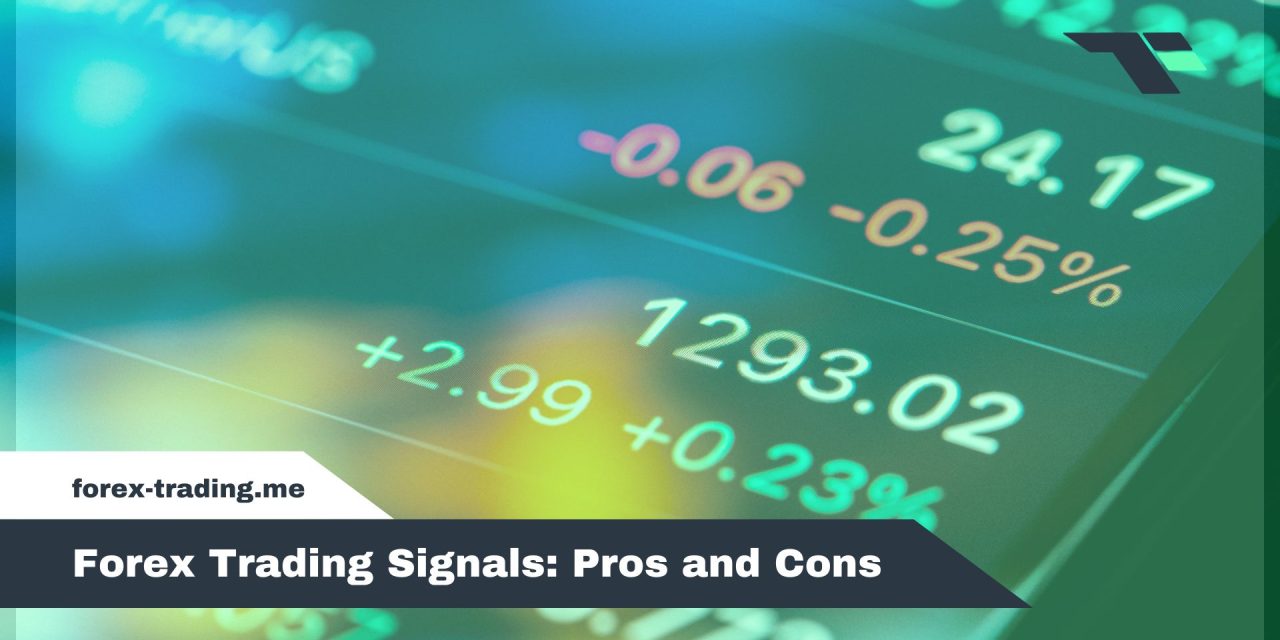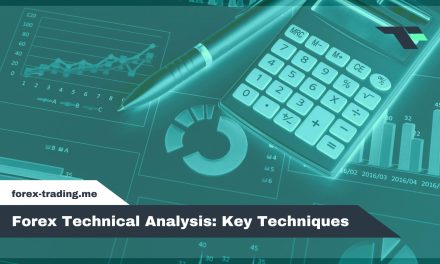
Forex Trading Signals: Pros and Cons

Forex trading signals offer automated alerts for currency pair opportunities, providing significant time savings and expert insights that can enhance trading efficiency for busy traders. However, these signals come with notable disadvantages including accuracy limitations due to market volatility, execution delays that may cause slippage, and potential fraud risks from unregulated providers. Quality signal services typically report win rates exceeding 60%, though approximately 15% lack verifiable track records. Proper evaluation of performance metrics and risk management remains essential for successful implementation and long-term profitability.
Table of Contents
Forex Trading Signals Introduction
Forex trading signals serve as automated or manual alerts that inform traders when specific market conditions suggest potential entry or exit opportunities in currency pairs. Traders utilize these signals to enhance decision-making speed, access professional analysis they might lack independently, and capitalize on market movements within the $7.5 trillion daily forex market without constant chart monitoring. Signal types generally fall into three categories: technical signals based on chart patterns and indicators, fundamental signals derived from economic data and news events, and sentiment-based signals that gauge market psychology and positioning.
Why Traders Use Signals
The overwhelming complexity of currency markets drives many traders to seek external guidance through trading signals, as the sheer volume of data, economic indicators, and technical analysis required for consistent decision-making can quickly become unmanageable for individuals juggling trading with other responsibilities. Time constraints represent the primary motivation, particularly for part-time traders who cannot monitor markets continuously during global trading hours. Many traders also lack the specialized knowledge needed to interpret complex technical patterns or fundamental economic data effectively, making expert analysis valuable for informed decision-making.
Surveys indicate that up to 60% of retail traders rely on external signals at least part-time, seeking systematic approaches that reduce decision fatigue and emotional trading. Signal services provide structured entry and exit points, enabling traders to implement disciplined strategies while leveraging professional expertise and sophisticated analytical tools they might not possess independently.
Signal Types Overview
Understanding how signals are generated becomes equally important once traders recognize their value in maneuvering complex markets. Signal providers employ distinct methodologies that cater to different trading approaches and risk tolerances.
The forex signal landscape encompasses several generation methods:
- Technical indicator-based signals – Utilize moving averages, RSI, MACD, and other chart patterns to identify entry points
- Fundamental analysis signals – Focus on economic news, central bank decisions, and macroeconomic data releases
- Hybrid signals – Combine technical and fundamental approaches for extensive market analysis
- Algorithmic signals – Employ automated systems and machine learning to process vast data sets
- Price action signals – Rely on candlestick patterns and support/resistance levels without traditional indicators
Market data reveals that over 70% of paid providers offer technical-indicator signals, while less than 20% focus exclusively on fundamental news-driven approaches.
Pros of Forex Trading Signals
Forex trading signals offer significant advantages that can enhance a trader’s overall performance and decision-making process. The primary benefit lies in the substantial time savings and increased efficiency that signals provide, as traders no longer need to spend countless hours analyzing charts, economic indicators, and market trends themselves. Additionally, signals grant access to expert market insights from professional analysts and experienced traders, allowing individuals to benefit from sophisticated analysis techniques and market knowledge that would otherwise take years to develop independently.
Time Savings & Efficiency
While modern traders face an increasingly complex market environment with over 180 currency pairs available for trading, forex signals offer a compelling solution to the time constraints that plague both novice and experienced market participants.
Automated signal systems dramatically reduce the hours traditionally spent on market analysis and strategy development. These efficiency gains manifest across multiple trading activities:
- Chart scanning automation: Backtesting platforms can process 1,000+ currency pairs in minutes versus hours manually
- Strategy backtesting acceleration: Complex algorithms test multiple scenarios simultaneously across historical data
- Real-time market monitoring: Continuous surveillance replaces manual chart watching during trading sessions
- Entry and exit timing: Predetermined signals eliminate decision-making delays during volatile market conditions
- Workflow optimization: Streamlined processes allow traders to focus on risk management rather than signal generation
This technological advantage enables traders to maintain market presence without sacrificing personal time or analytical accuracy.
Expert Market Insights
Beyond the time-saving benefits, forex signals provide traders access to sophisticated market analysis that would otherwise require years of experience to develop independently. Professional signal providers employ seasoned analysts who possess deep understanding of technical indicators, fundamental analysis, and market correlations across multiple currency pairs. These experts dedicate their careers to studying price patterns, economic data releases, and geopolitical events that influence exchange rates.
Additionally, many top-tier providers integrate AI-driven analysis systems that process vast amounts of market data simultaneously, identifying opportunities that human analysts might overlook. These algorithmic approaches can monitor dozens of currency pairs around the clock, applying complex mathematical models to detect profitable entry and exit points. Quality providers demonstrate their expertise through documented performance records, with leading services claiming average win rates exceeding 60% in live trading trials.
Cons of Forex Trading Signals
While forex trading signals offer clear benefits, several significant drawbacks can undermine their effectiveness and pose risks to traders’ capital. Accuracy limitations, execution delays, and reliability concerns represent the primary technical challenges that can transform potentially profitable signals into losing trades. Additionally, the unregulated nature of many signal providers creates compliance issues and exposes traders to fraudulent services that prioritize subscription fees over genuine trading performance.
Accuracy, Latency & Reliability Risks
The inherent volatility of forex markets creates considerable challenges for trading signal accuracy, as even sophisticated algorithms struggle to predict price movements with consistent precision. Signal providers face multiple technical obstacles that can considerably impact trading outcomes, particularly during high-volatility periods when opportunities appear most attractive.
Key reliability risks include:
- Execution delays – Signal transmission and processing can create timing gaps between signal generation and trade execution
- Slippage impact – Real-world slippage can consume up to 0.3% of trade value in fast-moving markets
- Model inaccuracy – Even advanced algorithms cannot account for unexpected market events or structural changes
- System reliability – Technical failures in signal delivery systems can cause missed opportunities or delayed responses
- Signal lag – Time delays between market movements and signal updates reduce effectiveness considerably
Compliance & Scam Concerns
Approximately 15% of forex signal services operate without any verifiable track record, highlighting a significant compliance and fraud risk that traders must navigate when selecting signal providers. Many unregulated vendors exploit inexperienced traders through misleading marketing claims, promising unrealistic returns while lacking proper oversight from financial authorities like the FCA or ASIC. These fraudulent schemes often disappear after collecting subscription fees, leaving subscribers without recourse.
Regulatory warnings frequently target signal services that operate without proper licensing or transparency requirements. Traders must conduct thorough due diligence by verifying provider credentials, checking regulatory status, and examining independently audited performance records. The absence of standardized compliance measures across jurisdictions creates additional vulnerability, making it essential for traders to prioritize providers with established regulatory oversight and transparent operational practices.
How to Choose the Best Forex Trading Signals
Selecting reliable forex trading signals requires careful evaluation of specific performance metrics that demonstrate consistent profitability over time. Traders must examine win rates, risk-to-reward ratios, maximum drawdown periods, and verified trading histories spanning at least three months to assess signal quality accurately. Understanding different pricing structures, from subscription-based models to performance fees, helps traders align signal costs with their expected returns and trading capital requirements.
Key Performance Metrics
Precision in evaluating forex trading signals requires analyzing specific performance metrics that reveal the true quality and consistency of signal providers. These quantitative measures enable traders to make informed decisions based on historical data rather than marketing claims.
Essential metrics include:
- Win rate – The percentage of profitable trades, though higher isn’t always better without context
- Risk-reward ratio – Compares average profit to average loss, indicating trade efficiency
- Maximum drawdown – The largest peak-to-trough decline, revealing potential account risk
- Signal frequency – How often signals are generated, affecting trading activity levels
- Sharpe ratio – Risk-adjusted returns measurement, with strong services targeting above 1.2
These statistics collectively provide an extensive view of signal quality, helping traders distinguish between genuinely effective services and those relying on selective marketing data.
Pricing Models Explained
Transparency in pricing structures reveals significant variations across forex signal providers, with costs ranging from completely free services to premium subscriptions exceeding $300 monthly. Subscription-based models typically charge flat monthly fees between $30 and $300, offering unlimited signals and analysis within that period. Commission-based arrangements take a percentage of trading profits, commonly starting at 10% of net gains, aligning provider interests with trader success.
Tiered access plans provide multiple service levels, where basic packages include fewer signals while premium tiers offer additional market analysis, priority support, and exclusive trading strategies. Many providers offer free trials lasting seven to thirty days, allowing traders to evaluate signal quality before committing financially. Cost analysis should consider signal frequency, accuracy rates, and additional educational resources when determining overall value proposition.
Forex Trading Signals Free Options
Budget-conscious traders often turn to free forex signal sources such as Telegram groups, broker-provided alerts, and social media communities to avoid monthly subscription fees. While these no-cost alternatives provide access to trading ideas without upfront financial commitment, they frequently come with significant limitations including unreliable performance, limited customer support, and potential conflicts of interest. Understanding the trade-offs between accessibility and quality becomes essential when evaluating whether free signal sources can meet specific trading objectives and risk management requirements.
Top Free Sources
Several established platforms offer forex trading signals without charging subscription fees, though traders should carefully evaluate the quality and consistency of these services before incorporating them into their strategies.
- Telegram channels provide real-time signal alerts from experienced traders, with many offering detailed analysis and reasoning behind trade recommendations, though signal quality varies considerably between channels
- MetaTrader signals marketplace features both free and paid options, allowing traders to browse provider performance histories and automatically copy trades directly to their accounts
- Broker trials from established firms typically provide limited access to premium signals, often restricting users to one signal per hour while demonstrating service capabilities
- Trading forums like Reddit FX communities share market insights and trade ideas through collaborative discussions, though signals lack professional verification
- Reputed broker freebies offer basic signal services to attract new clients, usually with simplified analysis
Hidden Costs & Limits
While these platforms appear to offer genuine value at no upfront cost, many free signal services operate with business models that introduce unexpected expenses and significant operational limitations once traders begin using them actively. Over 40% of “free” services require registration of credit card details, creating pathways for automatic billing after trial periods expire.
| Hidden Cost Type | Common Implementation |
|---|---|
| Trial Restrictions | Limited signals per day or delayed delivery |
| Upsell Tactics | Premium features locked behind paywalls |
| Data Latency | Delayed signals affecting market timing |
| Service Limits | Account restrictions after usage thresholds |
These limitations often surface when traders attempt to scale their activity, forcing decisions between accepting reduced functionality or upgrading to paid tiers with previously undisclosed pricing structures.
Integrating Signals into Your Strategy
Successfully implementing forex trading signals requires careful consideration of platform compatibility and technical infrastructure to guarantee reliable execution. Traders must evaluate whether their chosen broker supports signal integration through popular platforms like MT4, MT5, or cTrader, while also appraising the need for a Virtual Private Server (VPS) to minimize latency issues that can impact trade timing. The integration process should include establishing proper automation protocols and thorough risk management parameters to protect against potential signal failures or unexpected market volatility.
Compatible Platforms & VPS Needs
Most forex trading platforms offer varying degrees of compatibility with signal services, making the choice of trading software a critical factor in successful signal implementation. MetaTrader 4 and MetaTrader 5 dominate the market due to their extensive signal integration capabilities and automated trading features. cTrader provides a modern alternative with superior execution speeds and user-friendly interfaces.
Key platform considerations include:
- Signal compatibility – Native support for automated signal execution
- Execution speed – Millisecond differences can impact profitability markedly
- VPS integration – Seamless connection to virtual private servers
- Cost efficiency – Monthly fees starting around $10 for reliable hosting
- Uptime guarantees – 99.9% availability guarantees continuous signal processing
Virtual private server hosting becomes essential for traders relying heavily on automated signals, as it eliminates connectivity issues and guarantees consistent execution regardless of local internet conditions.
Automation & Risk Management
Beyond platform compatibility and hosting considerations, traders must establish robust automation frameworks that prioritize risk management alongside signal execution efficiency. Trade robots can streamline position entry and exit, but proper configuration of stop-loss and take-profit parameters remains vital for capital preservation.
| Risk Parameter | Conservative Setting | Aggressive Setting |
|---|---|---|
| Risk Per Trade | 1% of account equity | 2-3% of account equity |
| Stop-Loss Distance | 20-30 pips | 10-15 pips |
| Position Sizing | Fixed fractional | Dynamic volatility-based |
| Maximum Daily Risk | 3% total exposure | 5-7% total exposure |
Effective automation requires predetermined risk parameters that align with individual trading objectives. Position sizing algorithms should calculate lot sizes based on account equity and predefined risk percentages, typically maintaining the recommended 1-2% risk threshold per trade to guarantee long-term sustainability.
Forex Trading Signals Case Studies
Real-world case studies provide concrete examples of how forex trading signals perform across different market conditions and currency pairs. These practical scenarios demonstrate both the potential rewards and significant risks that traders face when following signal recommendations. Examining specific winning and losing trades offers valuable insights into signal reliability, timing accuracy, and the importance of proper risk management execution.
Successful Trade Breakdown
When executed with proper discipline and risk management, forex trading signals can deliver substantial returns, as demonstrated by a recent EUR/USD trade that captured a 150-pip move over three trading days. This successful breakdown illustrates how systematic signal implementation transforms market analysis into measurable profit.
The trade followed a structured approach from entry to exit:
- Entry point identification: Signal provider identified key support break at 1.0850
- Risk management: Stop loss positioned 30 pips above entry at 1.0880
- Position sizing: 1% account risk maintained through appropriate lot calculation
- Profit target execution: Exit signal triggered at 1.0700 resistance level
- Trade management: Position held through minor retracements using trailing stops
This systematic execution generated a positive risk-reward ratio of 5:1, demonstrating how proper signal utilization combined with disciplined trade management creates consistent profitability opportunities in forex markets.
Cautionary Loss Example
While the previous EUR/USD success story demonstrates ideal signal execution, forex trading signals carry inherent risks that can result in substantial losses, particularly during periods of unexpected market volatility. A cautionary example involves a GBP/JPY signal that recommended a long position based on technical analysis. However, signal lag during a volatility spike caused by an unexpected Bank of England announcement resulted in delayed execution.
The trader entered the position just as the pair began reversing sharply downward. Despite having a predetermined stop-loss level, the rapid price movement and increased spreads during the news event caused the stop-loss to trigger 50 pips beyond the intended level. This drawdown highlighted how risk events can amplify losses when signals aren’t adapted to sudden market changes.
Market & Provider Performance Stats
The foreign exchange market‘s staggering $7.5 trillion daily trading volume creates an environment where timely, accurate signals can considerably impact trading outcomes across millions of retail and institutional participants. Performance statistics from 2024 reveal that AI-driven signal adoption surged approximately 40%, reflecting traders’ increasing confidence in algorithmic analysis over traditional technical indicators. This rapid technological shift has fundamentally altered how providers structure their services, with machine learning algorithms now processing vast datasets to generate signals that often outperform manual analysis in both speed and consistency.
$7.5T Daily Market Volume
Every trading day, approximately $7.5 trillion changes hands across global foreign exchange markets, according to the Bank for International Settlements’ 2022 Triennial Central Bank Survey, making forex the world’s largest and most liquid financial market. This massive scale creates both opportunities and challenges for signal providers attempting to predict market movements.
The enormous daily volume impacts signal effectiveness in several key ways:
- High liquidity enables rapid trade execution with minimal slippage for most currency pairs
- 24-hour trading cycles across multiple time zones require signals to adapt to varying market conditions
- Institutional dominance means retail signal followers compete against sophisticated algorithmic trading systems
- Market fragmentation across different venues can create price discrepancies that affect signal accuracy
- Volatility patterns shift throughout trading sessions, influencing ideal signal timing and reliability
AI-Driven Signal Adoption +40% in 2024
Innovation in artificial intelligence has catalyzed a dramatic transformation in forex signal generation, with AI-driven signal services experiencing a remarkable 40% surge in subscriber adoption during 2024, according to multiple fintech industry analyses. This substantial growth reflects traders’ increasing confidence in machine learning algorithms that can process vast amounts of market data, identify complex patterns, and generate trading recommendations with unprecedented speed and accuracy.
The proliferation of algorithmic trading platforms has democratized access to sophisticated signal technologies previously reserved for institutional investors. Modern AI systems analyze multiple timeframes, economic indicators, and sentiment data simultaneously, offering retail traders enhanced market insights. However, this rapid adoption also introduces new considerations regarding signal reliability, performance consistency, and the importance of understanding underlying algorithmic methodologies before committing to AI-based signal services.
Common Mistakes & Best Practices
Many traders fall into the trap of blindly following signals without implementing proper risk management controls, often resulting in account drawdowns that can exceed 30% during volatile market periods. Another frequent mistake involves ignoring the broader market context when executing signal-based trades, such as trading against major economic announcements or during low-liquidity sessions that can amplify losses. Understanding these pitfalls, along with establishing clear best practices for signal integration, becomes essential for maintaining consistent trading performance and protecting capital over the long term.
Overreliance & Risk Controls
Automation’s allure often leads traders to surrender critical decision-making responsibilities to signal providers, creating a dangerous dependency that can amplify losses rather than generate profits. Successful traders maintain strict risk controls while treating signals as supplementary tools rather than absolute directives.
Essential safeguards include:
- Manual confirmation protocols – Verify each signal against market conditions and personal analysis before execution
- Stop-loss discipline – Set predetermined exit points regardless of signal provider recommendations
- Position sizing limits – Never risk more than 2-3% of account capital per trade
- Signal filtering systems – Apply technical indicators to confirm signal validity
- Performance tracking – Monitor win rates and drawdowns to assess signal effectiveness
Research indicates hybrid approaches combining signals with manual oversight can improve net returns by up to 15%, demonstrating that human judgment remains irreplaceable in risk management.
Considering Market Context
News-driven volatility can increase spreads by 50–100% during major announcements, invalidating signals generated under normal market conditions. Traders must adapt their approach during high-impact events, thin liquidity periods, and sentiment shifts that alter typical price behavior.
| Market Condition | Signal Reliability |
|---|---|
| Normal Trading Hours | High |
| Major News Releases | Low |
| Holiday Sessions | Medium |
| High Volatility Events | Low |
Successful traders recognize when standard signals lose effectiveness and adjust accordingly. During Federal Reserve announcements or employment data releases, technical patterns often break down as fundamental factors dominate price action. Ignoring market context transforms otherwise reliable signals into potential losses.
Forex Trading Signals Checklist
Implementing forex trading signals effectively requires a systematic approach that lessens implementation errors and maximizes potential returns. Traders who follow a structured checklist can minimize costly mistakes while establishing clear protocols for signal evaluation and execution. The process involves both initial setup considerations and ongoing monitoring procedures that guarantee signals remain aligned with evolving market conditions and personal trading objectives.
Step-by-Step Implementation
Most traders benefit from following a systematic approach when incorporating forex signals into their trading strategy, as the change from signal selection to live implementation requires careful validation at each stage.
The implementation process involves several critical phases that guarantee proper integration and risk management:
- Trial Setup: Begin with a demo account to test signal accuracy without financial exposure
- Demo Testing: Execute signals on paper or simulation platforms for at least three months to establish baseline performance metrics
- Account Integration: Configure trading platform settings to receive and process signals efficiently
- Live Trading: Start with minimal position sizes when moving to real money execution
- Performance Tracking: Monitor win rates, drawdowns, and profitability metrics against established benchmarks
This methodical approach allows traders to identify potential issues before committing significant capital while building confidence in their chosen signal provider’s reliability.
Ongoing Evaluation & Review
Once traders complete their initial implementation phase and begin executing live signals, the work of maintaining signal effectiveness requires systematic evaluation protocols that extend far beyond basic performance tracking. Successful traders establish quarterly review schedules to conduct thorough performance audits, examining KPI tracking data to identify trends and potential improvements. These periodic assessments focus on maintaining win rates above 55% while evaluating risk-adjusted returns and drawdown patterns.
Signal tuning becomes essential when performance metrics deviate from established benchmarks, requiring traders to adjust position sizing, entry timing, or provider selection. Continuous improvement processes involve reassessing market conditions, signal accuracy, and overall portfolio performance. Regular risk reassessment guarantees that signal strategies remain aligned with evolving market volatility and personal risk tolerance levels, creating sustainable long-term trading outcomes.
Below is a streamlined checklist that brings together every critical step—from your first demo tests to regular performance tune-ups—so you can confidently implement and monitor forex trading signals without missing a beat. Follow each phase in order to minimize errors, control risk, and keep your strategy aligned with market shifts.
| Phase | Step | Action Items | Objective |
|---|---|---|---|
| Initial Setup | Trial Setup | Open demo account; subscribe to signal provider | Test signal reliability risk-free |
| Demo Testing | Run signals for ≥3 months; record win rate, drawdown, risk-reward ratio | Establish baseline performance metrics | |
| Integration | Account Integration | Configure MT4/MT5 or cTrader; set up alerts/API link | Ensure seamless, timely signal delivery |
| Live Trading | Use 1–2% position sizing; apply stop-loss and take-profit rules | Transition to real capital with controlled risk | |
| Monitoring | Performance Tracking | Track KPIs (win rate, drawdown, profitability); compare vs. benchmarks | Detect deviations early |
| Ongoing Review | Quarterly Audit | Schedule every 3 months; review KPI trends and risk-adjusted returns | Maintain win rate ≥55% and healthy drawdowns |
| Signal Tuning | Adjust entry timing, position sizing, or provider; retest in demo | Optimize for changing market conditions | |
| Risk Reassessment | Reevaluate volatility impact; update stop-loss and leverage rules | Align strategy with evolving risk tolerance |
Conclusion
Forex trading signals present both opportunities and challenges for market participants. While they offer time-saving benefits, educational value, and access to professional expertise, traders must carefully weigh potential drawbacks including cost, reliability concerns, and risk of over-dependence. Success requires thorough provider evaluation, proper risk management, and integration with personal trading strategies. Signals work best as supplementary tools rather than complete trading solutions, demanding continued learning and independent market analysis















